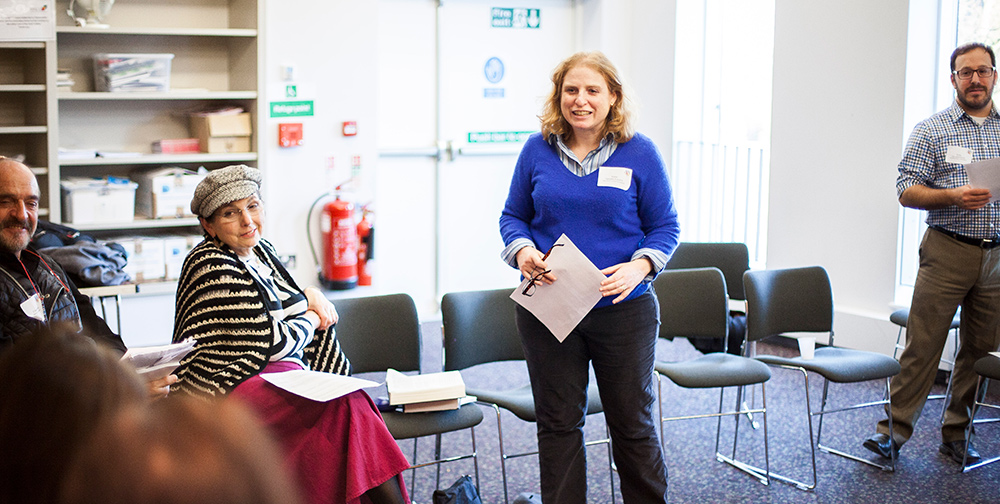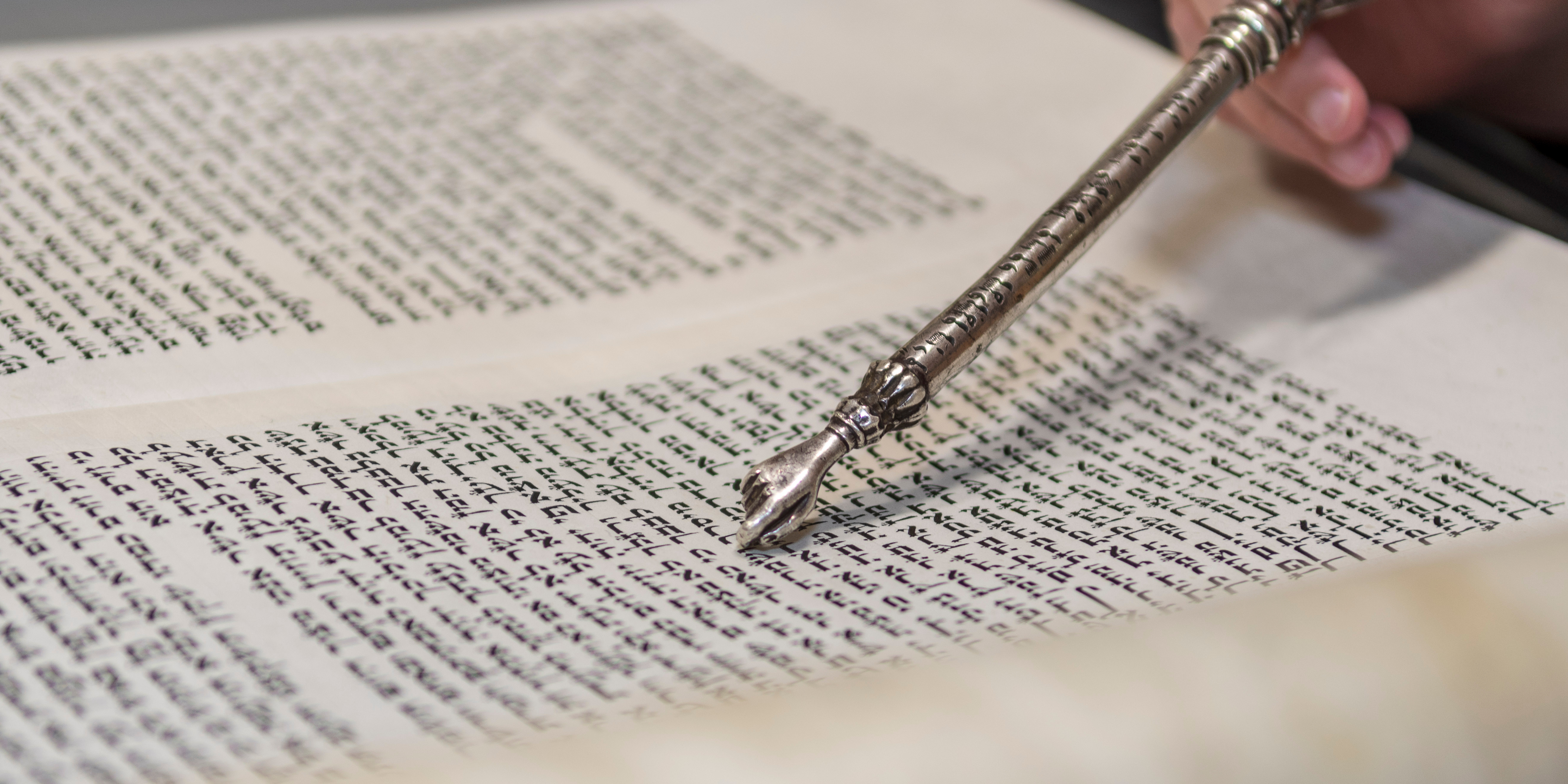Beyond the Object: The Yad

A yad is a ritual pointer used by Torah readers to follow the text when leyening (chanting from the Torah scroll). It’s used to ensure that we don’t damage the parchment of the scroll – or worse, deface the lettering – by touching it directly with the fingers. Most yadot (the plural of yad in this context) take the form of a long rod that ends in a small hand with a pointing index finger; hence the name (yad means hand in Hebrew). Traditionally, they are made of silver and decorated with filigree work or precious stones, using designs based on Jewishly resonant motifs and symbols (pomegranates, crowns, stars of David). Contemporary artists and craftsmen draw on new materials and designs to create yadot that might be more appealing to a modern sensibility.
The yad is different from ritual objects used in the home, like the kiddush cup or seder plate, and even from other objects that, like the yad, serve a supportive function, such as the decorated boxes used to store etrogs on Sukkot. Nobody needs a yad of their own, and a yad in a home might never be brought out to see the light of day. We can imagine a yad down in the recesses of a cupboard, or propped in a display cabinet, radiating jealousy as the etrog box is extracted each year to be readied for its triumphant week in the sun. The yad only makes sense in a communal context, where Jews who cherish the communal facets of our tradition come together to celebrate and sustain them. Likewise, despite its often elaborate decoration, the yad is by definition a utilitarian object. It exists to be used, and must serve its intended purpose if it is to have any meaning.
The yad is also a tactile object. For those of us who leyen on a regular basis, a favourite yad is like a favourite mug or kitchen knife (I would have said a favourite pen if anybody still wrote anything important in longhand). If your community has more than one yad, after a while you’ll find that one seems to fit the hand better than the others: the shape, the heft, the texture of the surface feel more “right”. Even more, just as a favourite mug can carry emotional associations (the heft of it, the feel of the lip, conveying something like love or comfort), so too can a yad. For me, a yad (really, any yad) conveys a powerful sense of belonging, as though in grasping it I have joined hands with a long chain of Torah readers stretching out in both directions.
I don’t own a yad myself, though I coveted one for a while. This dates back to the early 2000s, when I began leyening on a regular basis. I longed for a yad for years, and then one day realized I no longer did; the desire had lifted without my noticing. Soon after that, my twin daughters received beautiful yadot as bat mitzvah gifts. So now there are two yadot in the house – gorgeous objects, delicate yet with a certain heaviness, silver-plated and hand-enamelled in blue, green, brown and gold to represent the Tree of Life. They sit tucked away in their cupboards, in my daughters’ rooms, waiting to be taken out and shown the light of the sun.
At Kol Nefesh, we have four yadot. All are silver and for the most part traditional in design. They also all have histories, though these are in some cases obscure. The one I most like to use when I’m leyening, the one that feels most right in my hand, came to Kol Nefesh via a friend of one of our members. She (the friend) came across it in an antique shop in Italy and couldn’t bear to leave it there to be bought, potentially, by someone who would treat it as a historical curiosity or objet d’art to be exhibited in a display case – or, even worse, by someone who didn’t know its significance at all. The yad is beautifully worked with a delicate visual balance, the three spheres at the top serving as counterpoint to the triangle formed by what looks like a gloved hand at the bottom, the triangle and spheres repeated in reverse order just above the centre, the “glove” and lowest sphere seemingly joined by a slender spiralled thread. The main feature, though, where the eye is inevitably drawn, is a group of three men, robed and bearded, who seemingly strain to support the three upper spheres on their tired shoulders – much like familiar depictions of Atlas bent under the weight of the Earth, except that the arms of the three robed men are at their sides. Who these robed figures are meant to be, or whether they are meant to be anyone in particular, is a mystery. For a long time, I’ve felt uneasy about them. They seem to suggest that bearing the weight of Torah is a burden, that they would give it up if they could, and that each one only continues to carry his share of the weight for fear that in stepping away, he would place an intolerable load on the others. Yet recently I’ve come to feel more sympathetic towards these anonymous sufferers. While we can only imagine the trajectory that led the yad to that Italian antique shop, it seems likely that the catastrophe of 1939-1945 played some part in it. There have been times and places when to be a Jew was to be oppressed. At some of those times, we could all have walked away together. That we chose not to is why a yad is still an object to be used with love.
Meira Ben-Gad is a member of Kol Nefesh Masorti Synagogue, where she is a regular Torah reader and co-editor of the community’s semi-annual magazine, Kol HaKehila. In daily life she is a freelance copy editor specializing in academic manuscripts.



